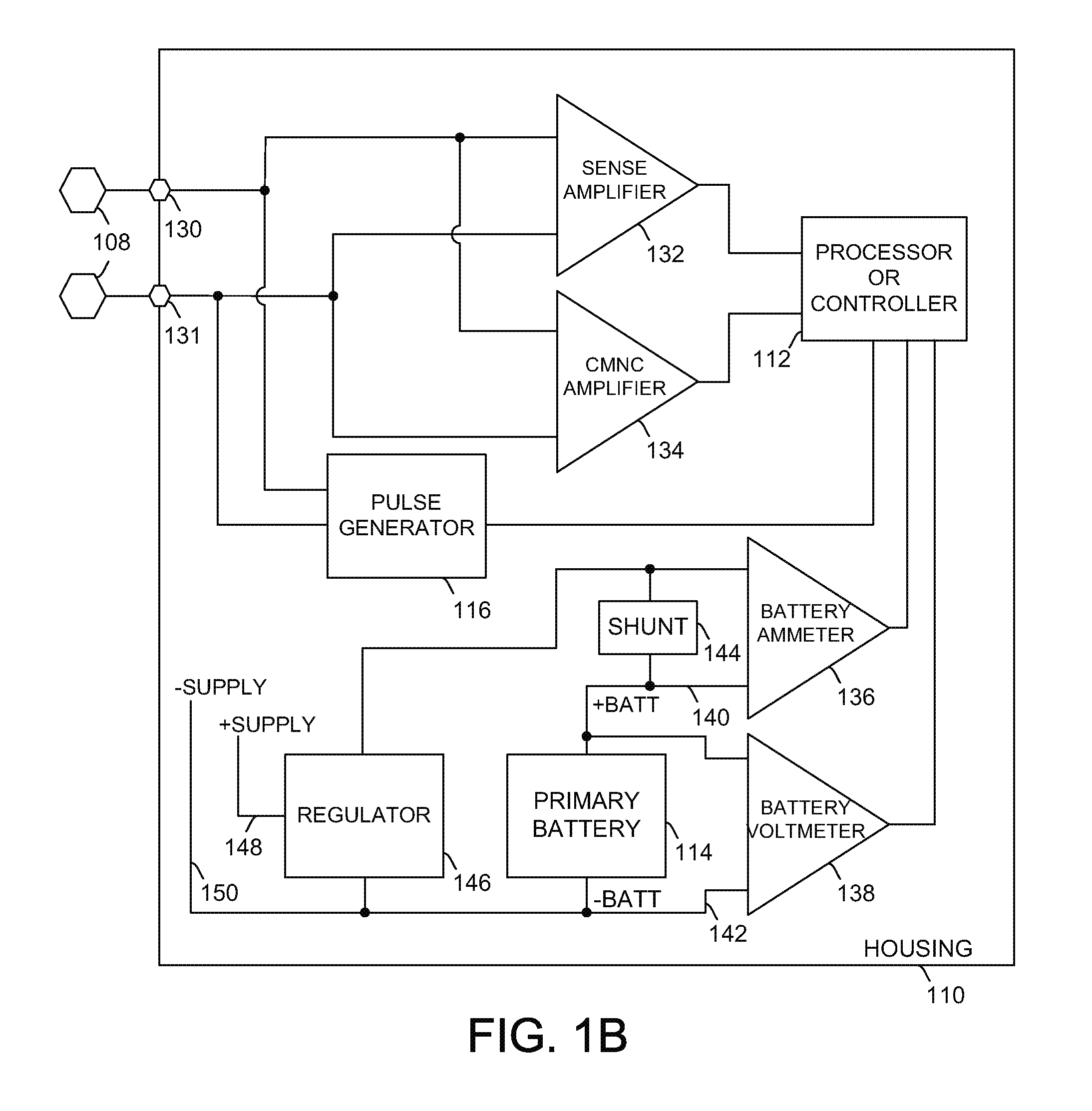Leadless cardiac pacemaker with conducted communication
- Summary
- Abstract
- Description
- Claims
- Application Information
AI Technical Summary
Benefits of technology
Problems solved by technology
Method used
Image
Examples
specific examples
[0152]FIG. 11 illustrates one embodiment including an external programmer 106 in communication with at least one cardiac pacemakers 102, the pacemaker 102 including a first pulse generator 116 and a second pulse generator 776. The first pulse generator 116 can be used for pacing through the electrodes 108 while the second pulse generator 776 can be used for delivering communication pulses through the electrodes 108 to the external device 106. Thus, the second pulse generator 776 can be uninvolved in the pacing process. The second pulse generator 776 can generate different pulses at different amplitudes from the first pulse generator 112. Advantageously, this allows for the amplitude of the pulses to be optimized for communication or for pacing.
[0153]The second pulse generator 776 can be powered from a power supply shared with another function. This power supply can be the lowest-voltage supply already used for another function. For example, the second pulse generator 776 can use the...
PUM
 Login to View More
Login to View More Abstract
Description
Claims
Application Information
 Login to View More
Login to View More - R&D
- Intellectual Property
- Life Sciences
- Materials
- Tech Scout
- Unparalleled Data Quality
- Higher Quality Content
- 60% Fewer Hallucinations
Browse by: Latest US Patents, China's latest patents, Technical Efficacy Thesaurus, Application Domain, Technology Topic, Popular Technical Reports.
© 2025 PatSnap. All rights reserved.Legal|Privacy policy|Modern Slavery Act Transparency Statement|Sitemap|About US| Contact US: help@patsnap.com



